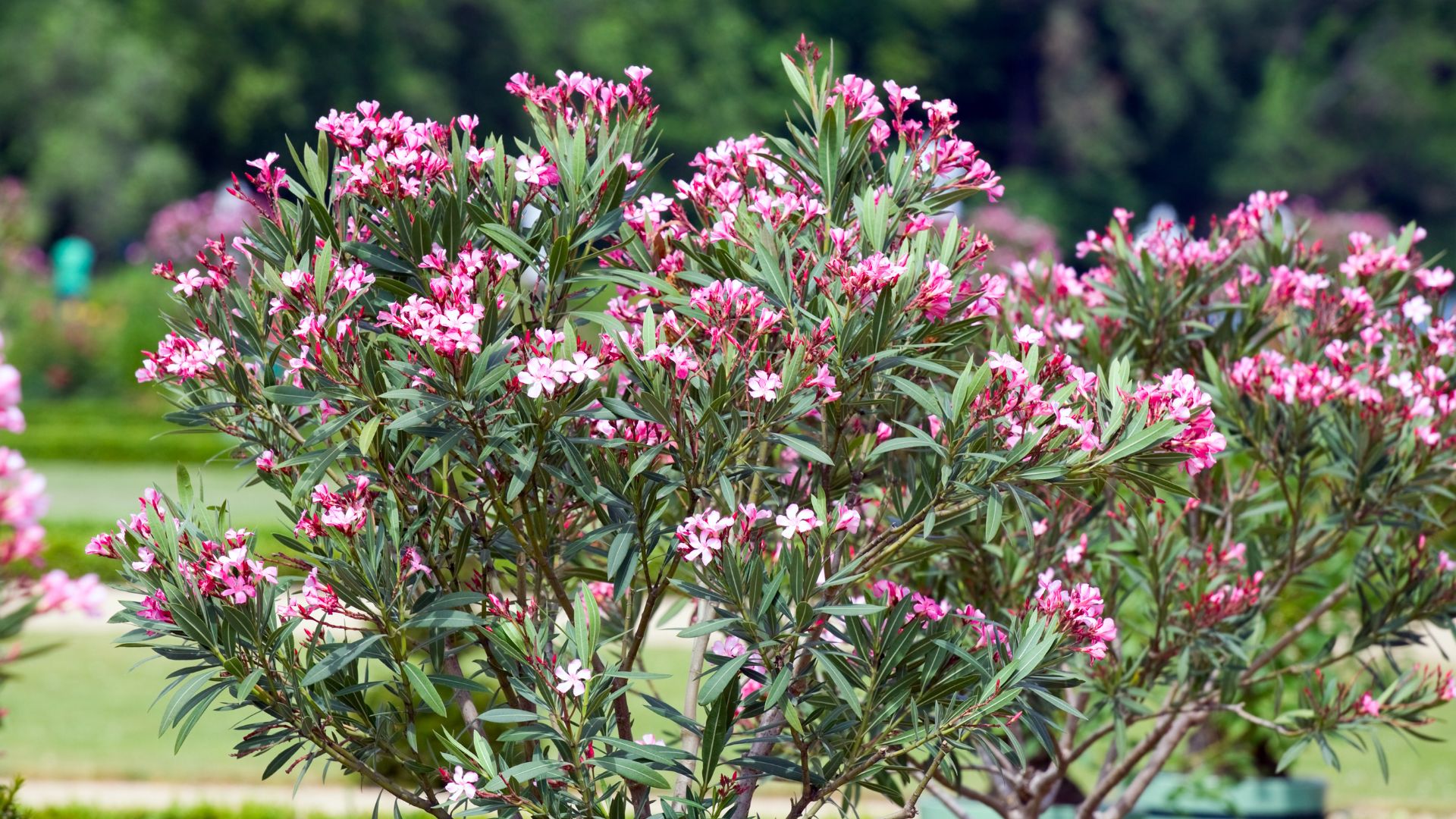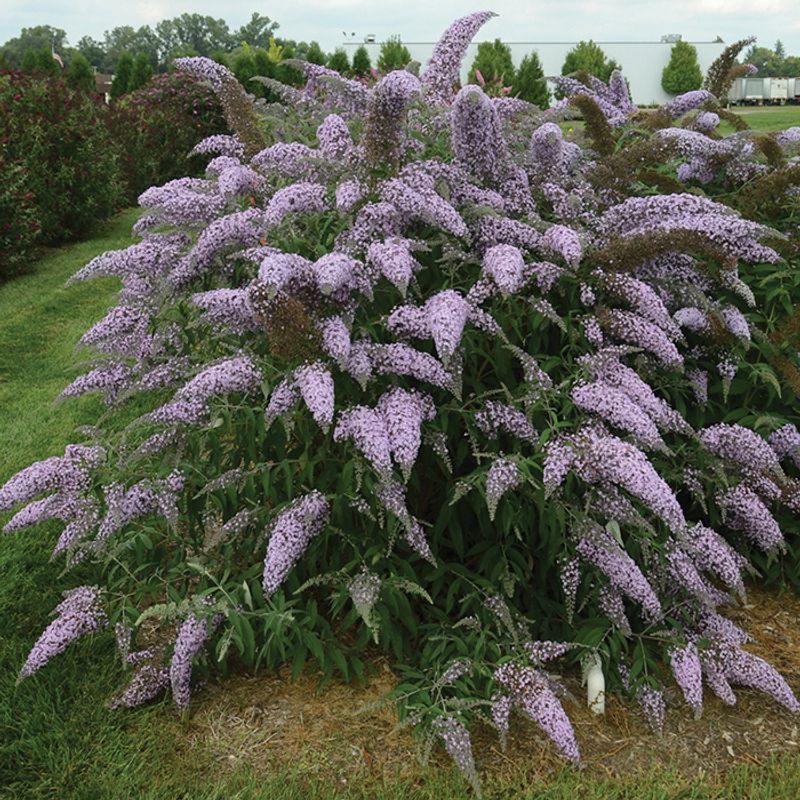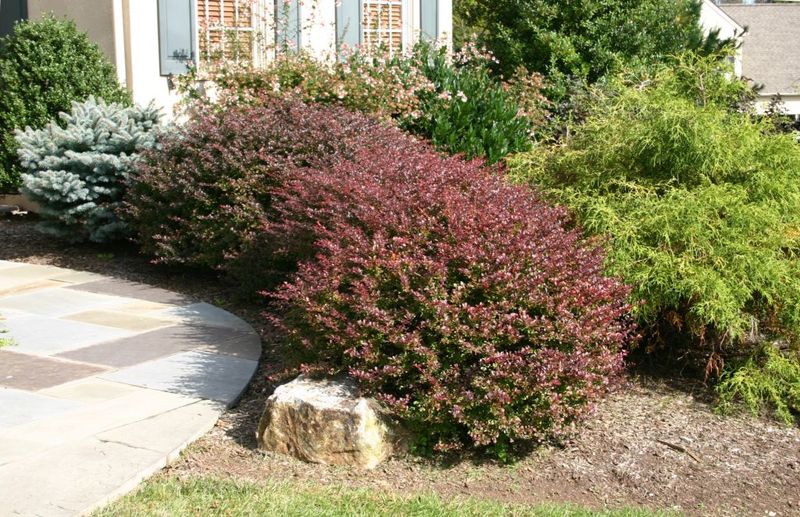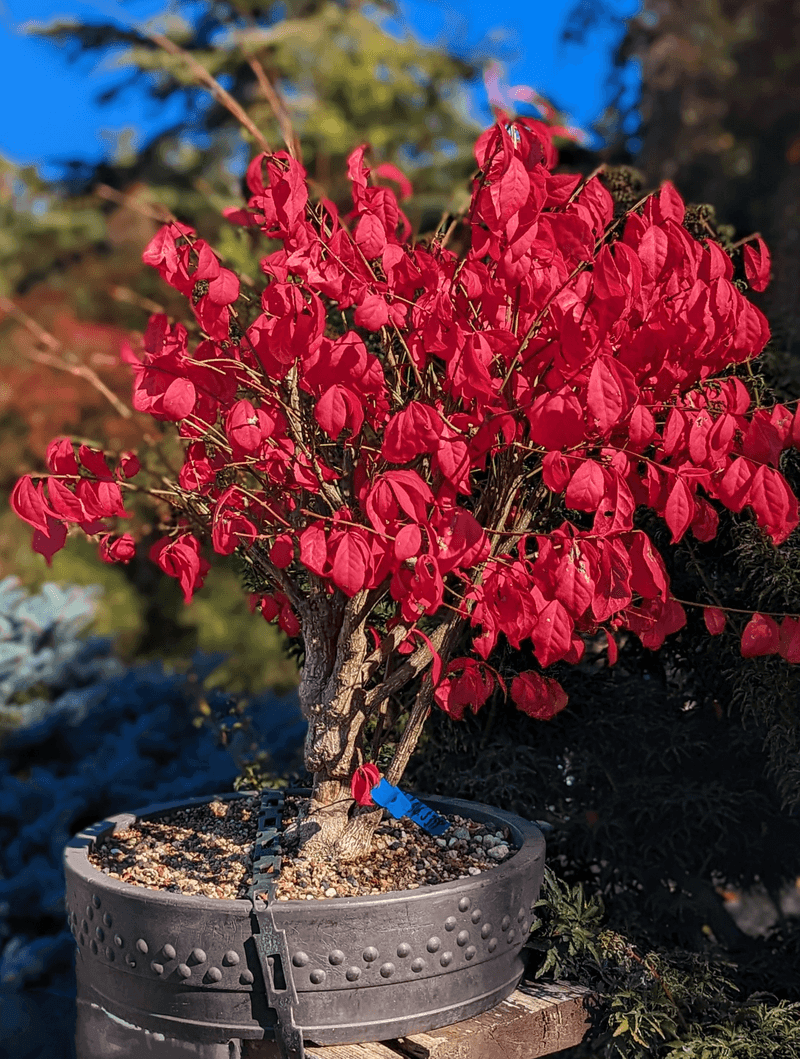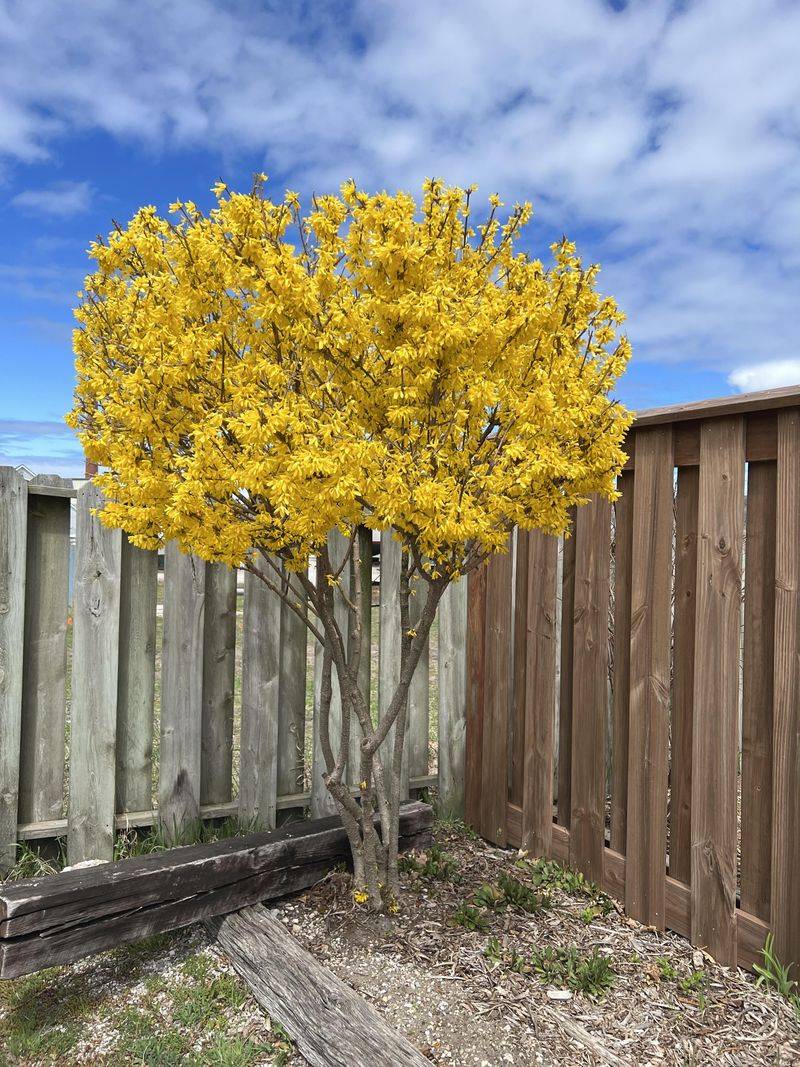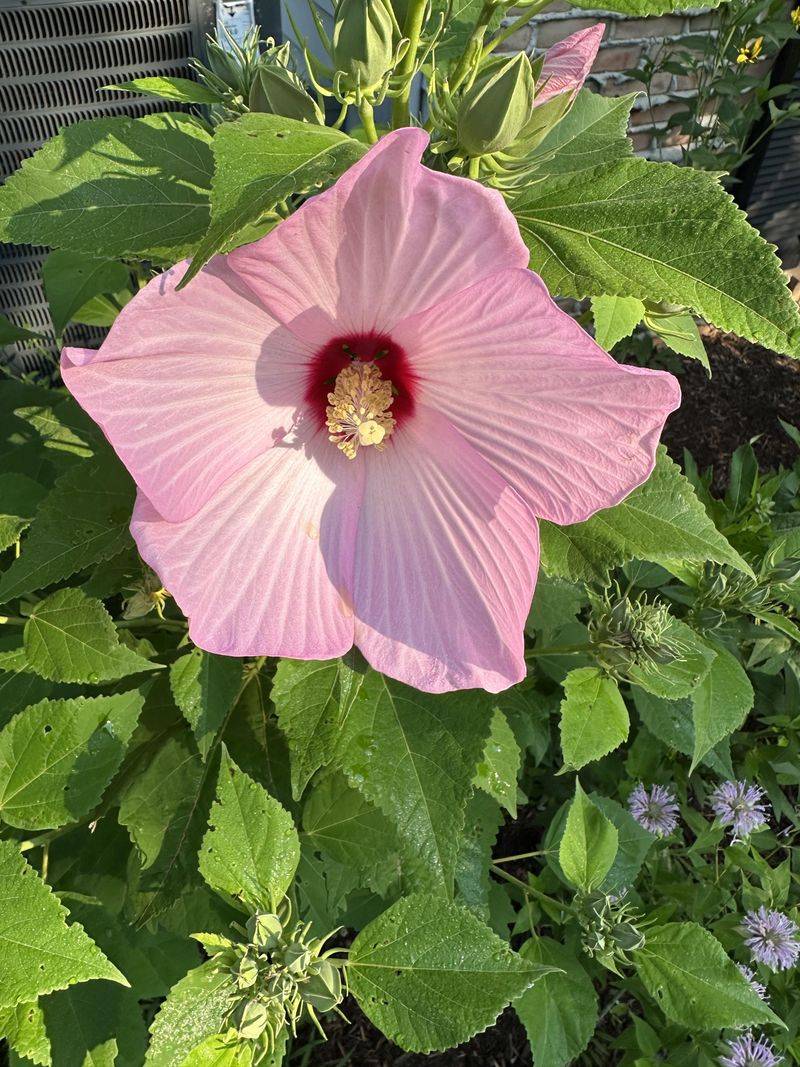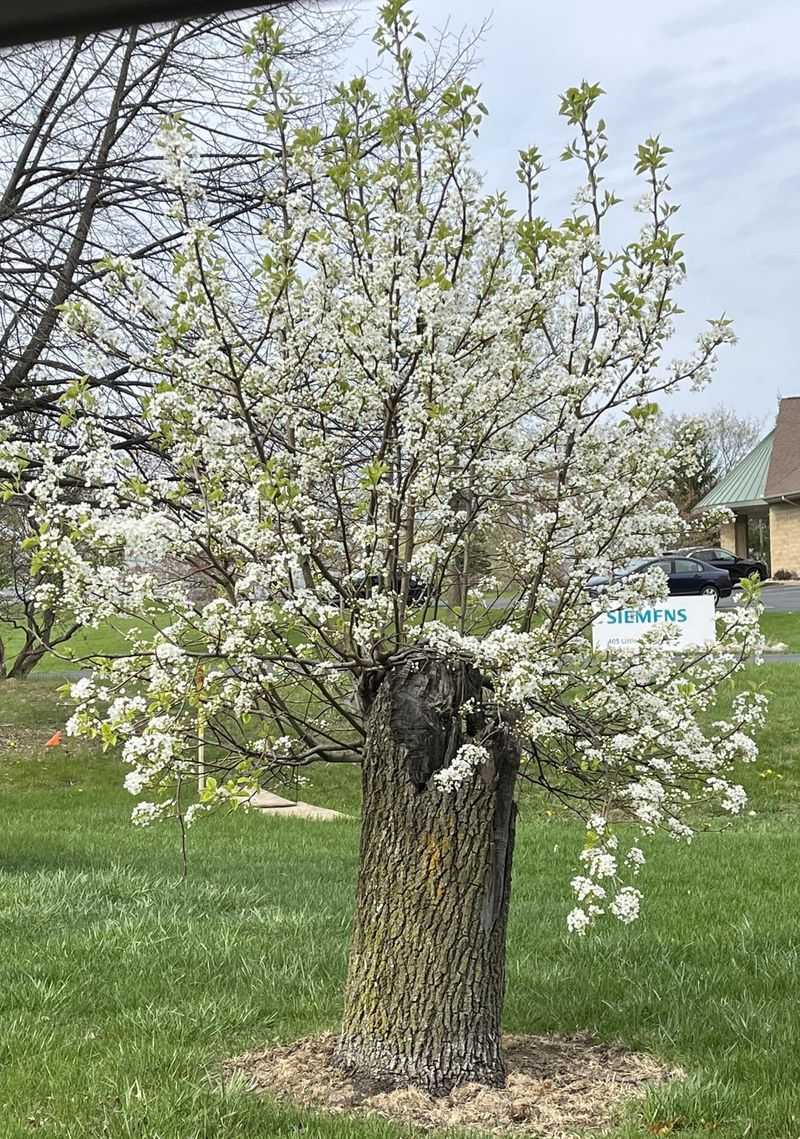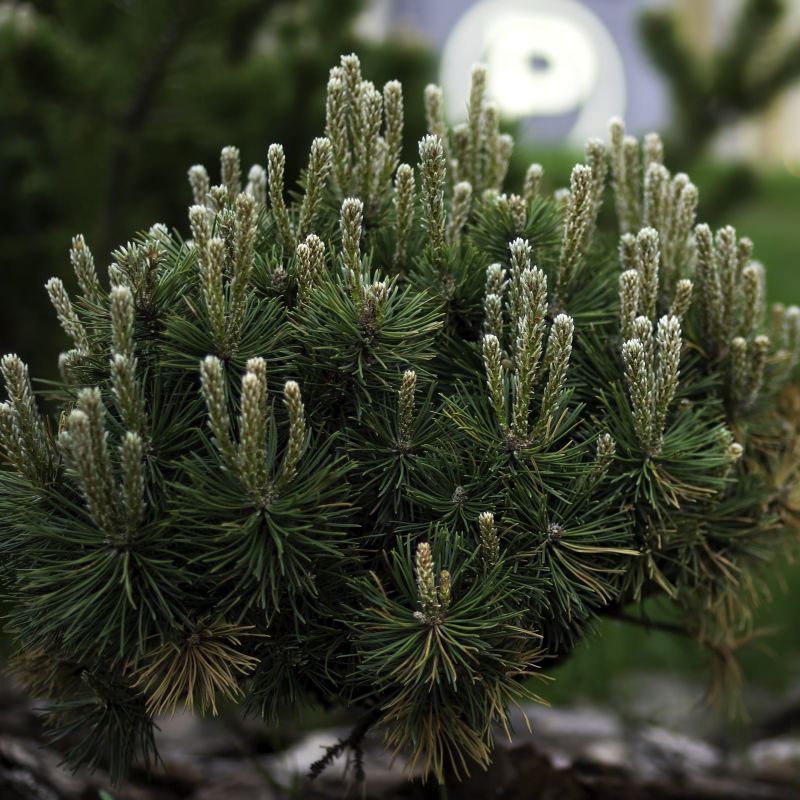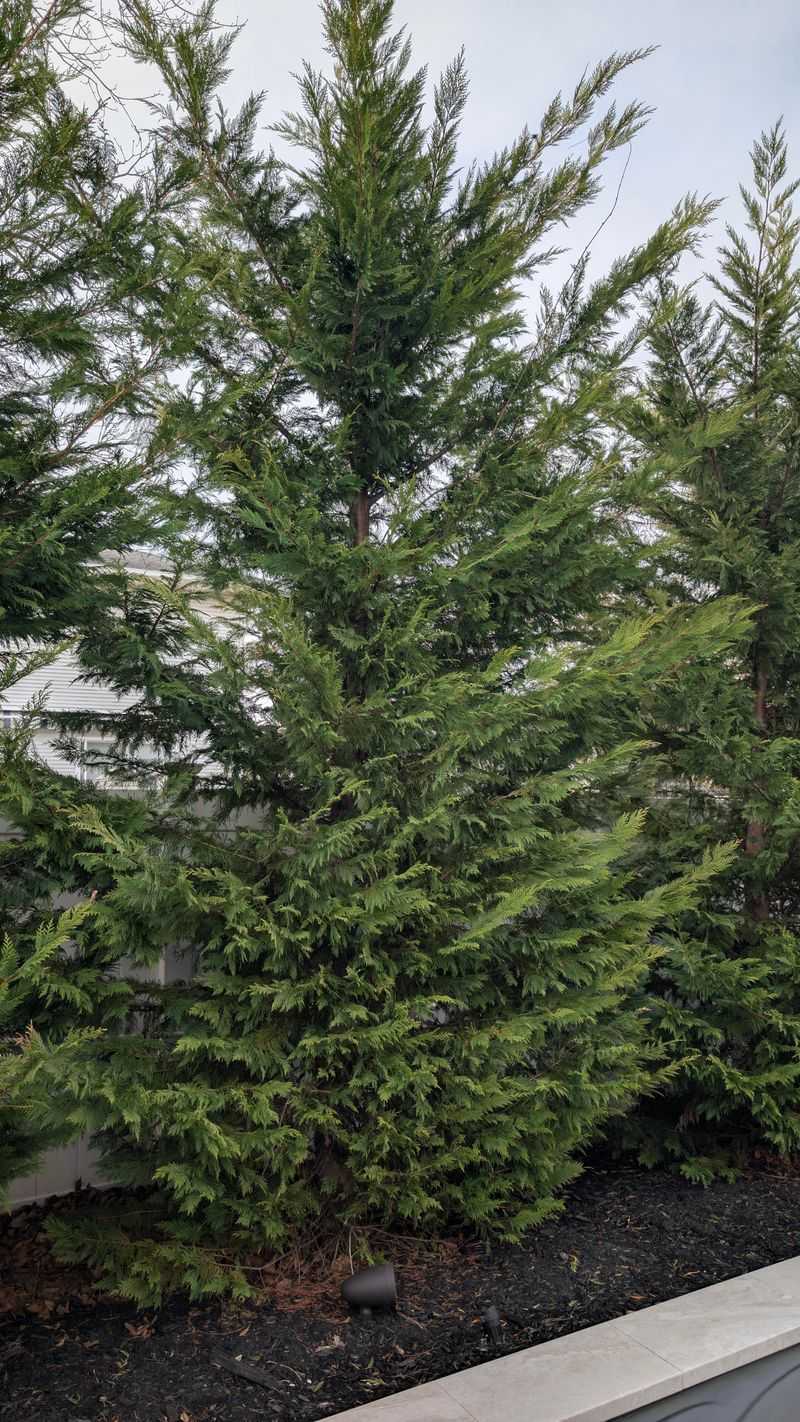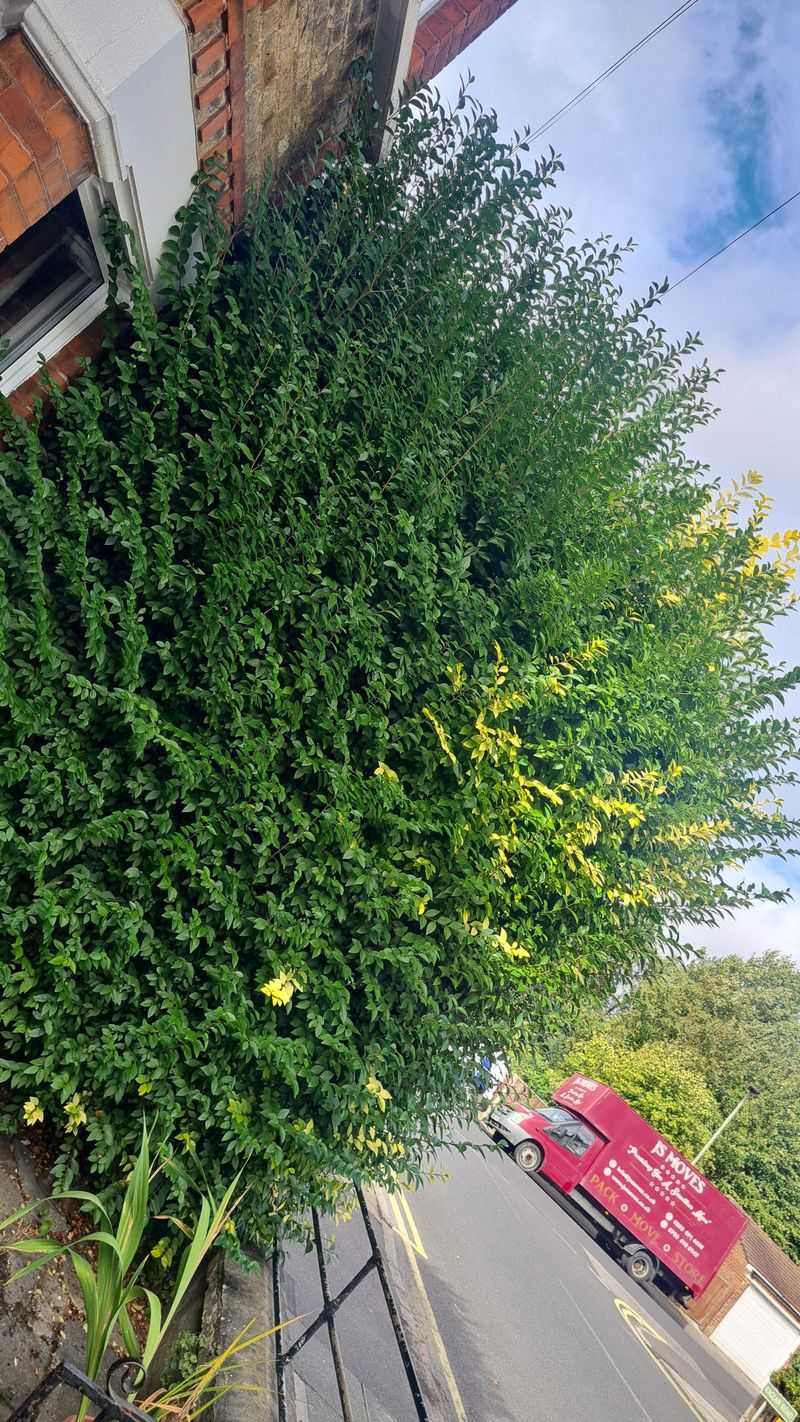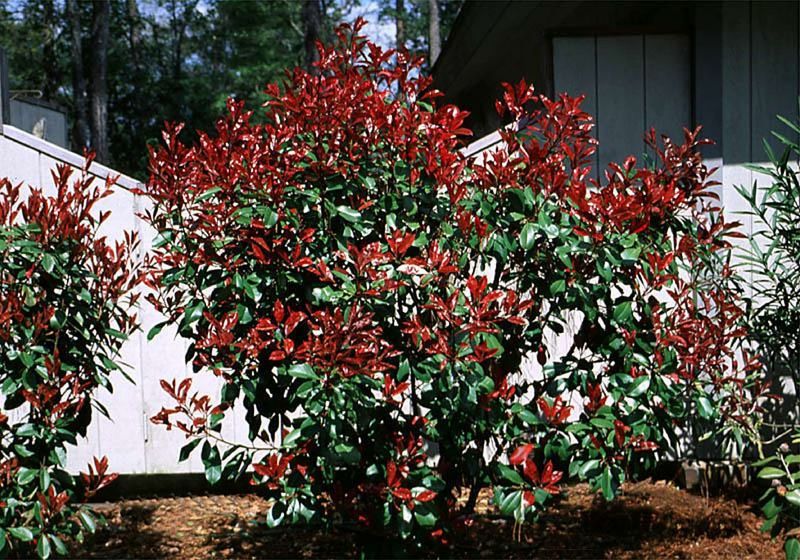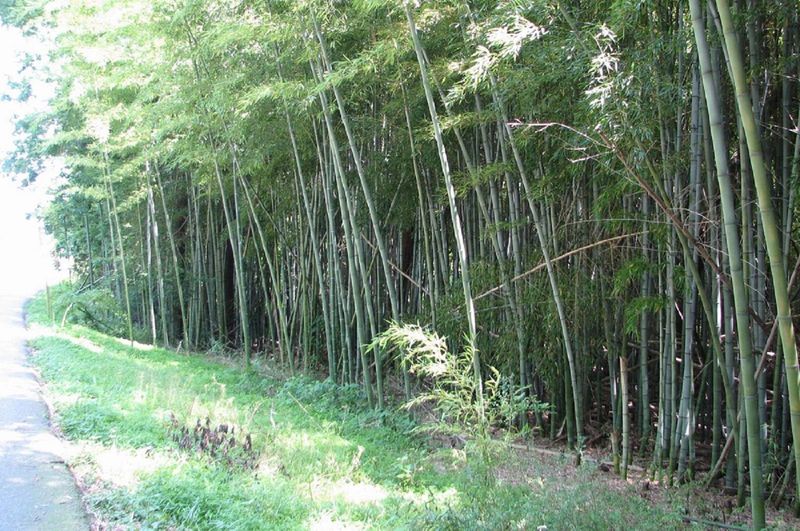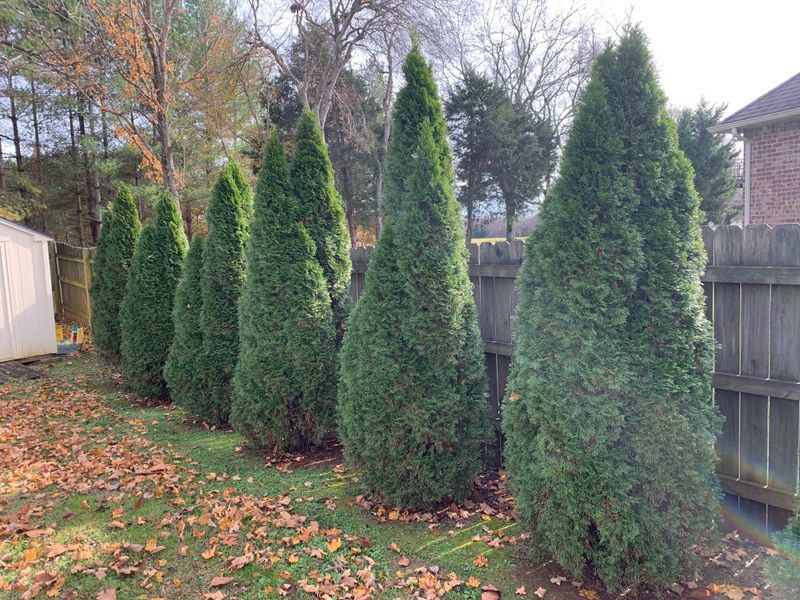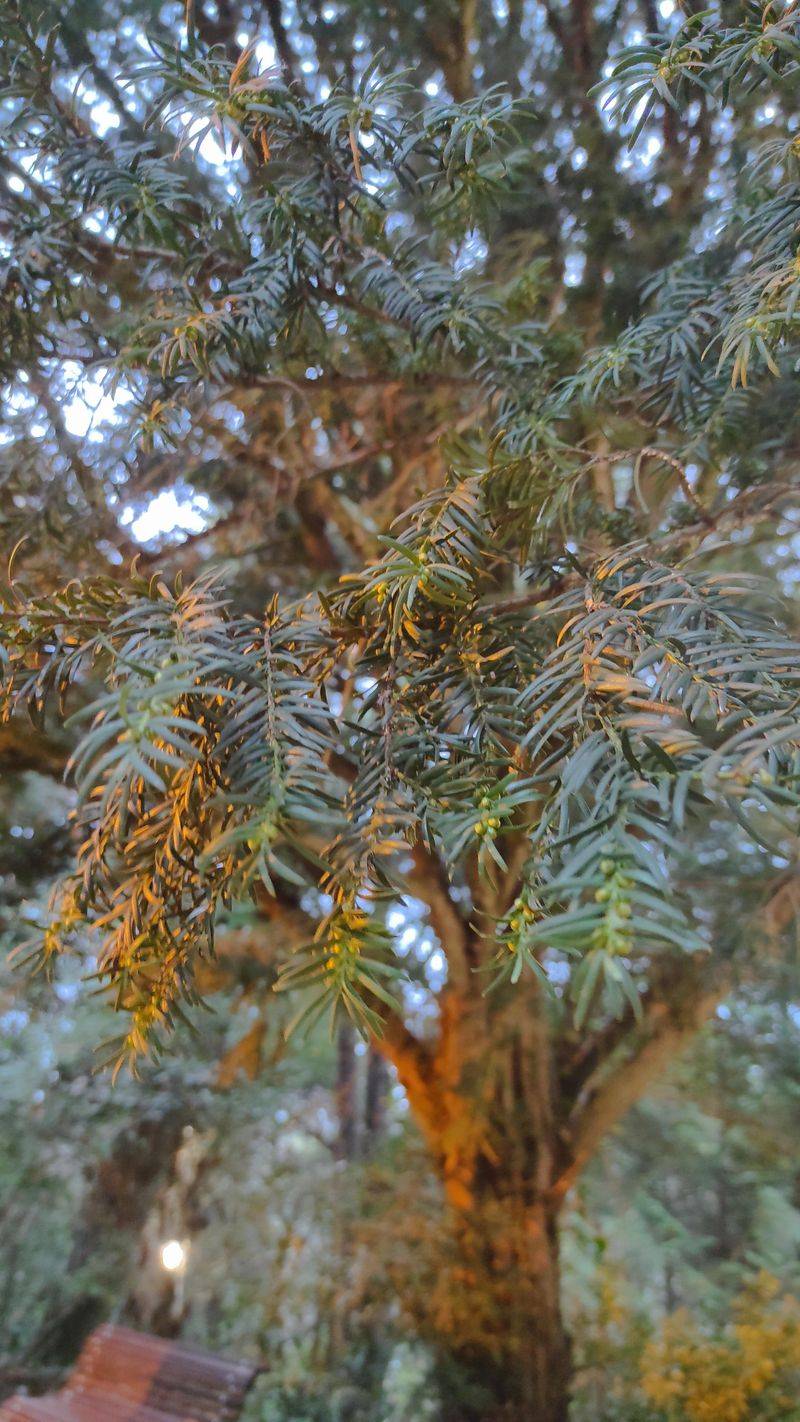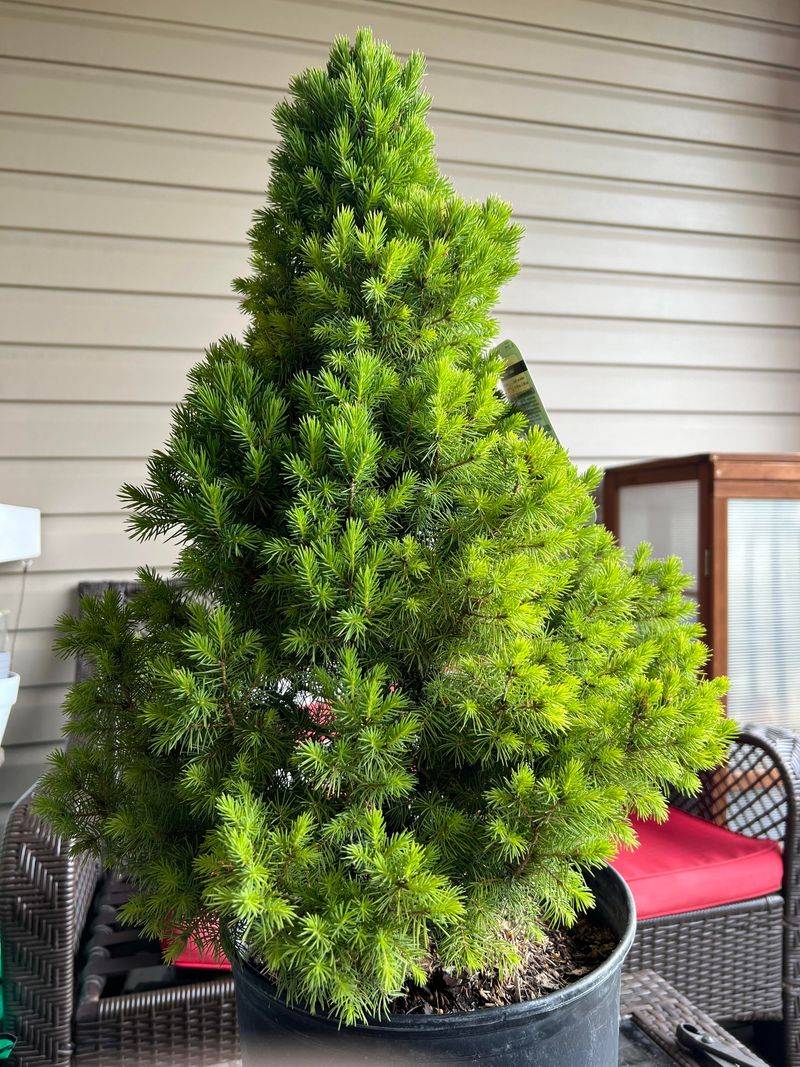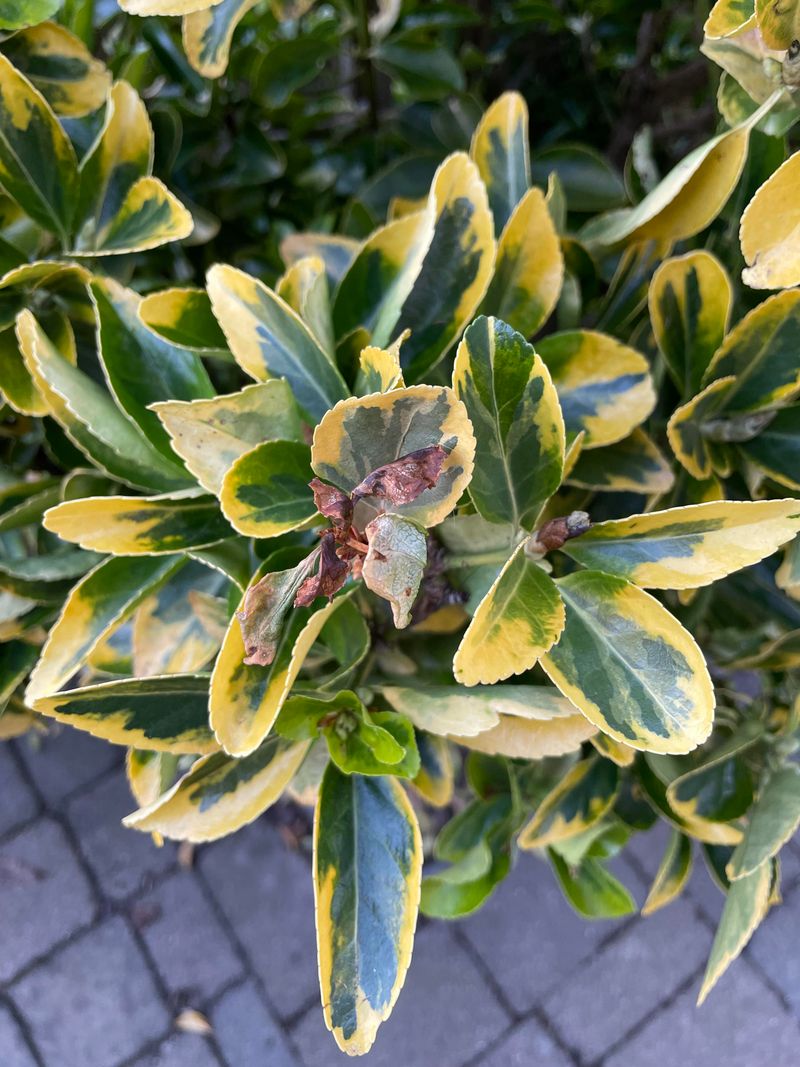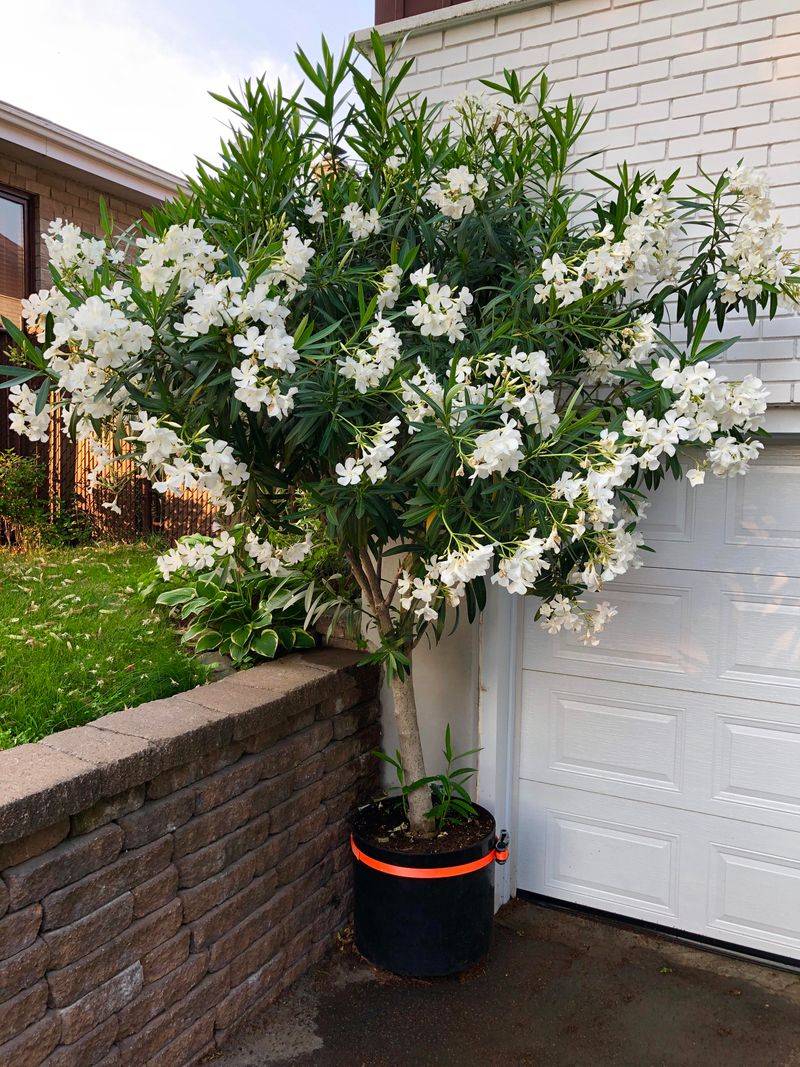Dreaming of a little more peace and privacy in your yard? A living fence can be a beautiful, eco-friendly way to create your own quiet retreat—no wood, vinyl, or metal required. But not every lovely shrub at the garden center is built for that job.
I’ve learned the hard way that some of those promising plants grow painfully slow, turn scraggly over time, or need way more trimming than you expect. I once planted what I thought would be the perfect screen, only to end up with patchy growth and nonstop maintenance just a year later.
Before you start digging, it helps to know which shrubs are more trouble than they’re worth—and which ones will actually give you that full, lush, low-maintenance privacy wall you’re after. In this guide, we’ll cover the common letdowns and better picks to help you grow a green space you’ll love.
1. Butterfly Bush: Beauty That Fails As A Barrier
Butterfly Bush might attract wonderful pollinators, but it creates terrible privacy screens. The sparse branching pattern leaves significant gaps between stems, and the winter dormancy period exposes your yard completely when you might still want coverage from neighbors.
These bushes require aggressive annual pruning to maintain any semblance of density. Without constant attention, they quickly become leggy and bare at the bottom while growing too tall at the top, creating an awkward, ineffective barrier.
Plant Ninebark instead. This native alternative offers dense, year-round coverage with attractive exfoliating bark for winter interest. Ninebark maintains its privacy-providing shape with minimal pruning and resists most pests and diseases that plague Butterfly Bush.
2. Japanese Barberry: Invasive Nightmare
Japanese Barberry might seem appealing with its dense growth and colorful foliage, but this invasive species creates serious ecological problems. Once established, it escapes garden boundaries and crowds out native vegetation in natural areas, disrupting local ecosystems and providing tick habitat.
The thorny branches make maintenance a painful chore, often leading to neglect. Many states have now banned this plant entirely due to its invasive nature, making it an illegal choice in numerous regions.
Consider Bayberry as a superior alternative. This native shrub provides excellent density for privacy screens without invasive tendencies. Its aromatic foliage repels many common garden pests naturally, and the silvery berries attract beneficial birds while maintaining a consistent privacy barrier year-round.
3. Burning Bush: Deceptive Privacy Provider
Burning Bush lures gardeners with its spectacular fall color, but disappoints as a privacy screen. The foliage density varies dramatically through seasons, leaving your yard exposed during critical times when you most desire privacy.
This shrub’s invasive tendencies have led to bans in many regions as it escapes gardens and threatens native woodlands. Its seeds spread aggressively via birds, potentially creating problems for your neighbors and local natural areas.
Plant Viburnum instead. Species like Arrowwood Viburnum offer reliable screening with multi-season interest from spring flowers to fall berries and foliage. Unlike Burning Bush, viburnums maintain consistent density year-round and support local wildlife without becoming invasive troublemakers.
4. Forsythia: Spring Beauty, Year-Round Failure
Forsythia dazzles with bright yellow blooms in early spring, but quickly becomes a privacy disappointment after its fleeting show. The irregular growth pattern creates a patchy barrier with significant gaps between branches, allowing clear sightlines through what should be a visual screen.
Maintenance becomes increasingly difficult as plants age. The oldest stems grow woody and unproductive, requiring removal to maintain any screening value. Without constant pruning, forsythia grows wild and untamed while paradoxically providing less actual privacy.
Try Cornelian Cherry Dogwood instead. This underused shrub offers similar yellow spring flowers but maintains a denser habit throughout the year. The bonus of edible summer fruits attracts birds while the consistent foliage creates a more effective visual barrier through all seasons.
5. Rose Of Sharon: Leggy Problem-Maker
Rose of Sharon tempts with tropical-looking summer flowers, but creates ineffective privacy screens. The slow growth rate means waiting years for any meaningful height, while the naturally leggy form develops bare lower portions that expose your yard to view.
This high-maintenance shrub demands deadheading to prevent aggressive self-seeding that can quickly turn one plant into dozens of unwanted volunteers throughout your yard. The winter appearance reveals a sparse, stick-like structure that provides zero screening during dormant months.
Choose American Hornbeam instead. This native small tree/large shrub creates a living wall effect with dense foliage from ground to top. The attractive muscled bark provides winter interest while maintaining privacy, and the naturally neat growth habit requires minimal pruning to stay effective.
6. Bradford Pear: Brittle And Problematic
This one creates privacy problems rather than solutions. The weak branch structure means these trees frequently split during storms, leaving sudden gaps in your privacy screen precisely when you need it most. The white spring flowers may look pretty but produce an unpleasant odor many compare to rotting fish.
Originally bred to be sterile, these trees have cross-pollinated with other pear varieties to produce highly invasive offspring. Many communities have banned new plantings due to their aggressive spread into natural areas.
Plant American Holly instead. This native evergreen creates year-round privacy with dense, thorny foliage that deters both nosy neighbors and unwanted wildlife. The red winter berries provide visual interest while supporting native birds, and the strong branching withstands storms that would destroy Bradford Pears.
7. Mugo Pine: Dwarf That Doesn’t Deliver
Mugo Pine misleads with marketing as a compact evergreen, but many varieties grow far larger than nursery tags suggest. What starts as a manageable border plant often becomes an oversized monster that requires significant pruning to maintain reasonable dimensions.
The slow growth rate means waiting decades for effective screening height. Meanwhile, older specimens often develop needle browning and dieback in the center, creating unsightly gaps in what should be a solid privacy barrier.
Eastern Red Cedar makes a superior alternative. This native conifer quickly establishes an effective privacy screen with dense branching from ground to top.
8. Leyland Cypress: Fast-Growing Disappointment
Leyland Cypress promises quick privacy with its rapid growth rate, but this apparent advantage becomes its downfall. The soft wood and shallow root system make these trees extremely vulnerable to wind damage, ice storms, and drought stress, often resulting in dead patches or entire tree failure.
Bagworms and canker diseases specifically target this species, causing unsightly damage that can spread throughout your entire privacy screen. The excessive height (potentially reaching 70+ feet) creates maintenance nightmares and potential liability issues near property lines.
Green Giant Arborvitae delivers better results with similar quick growth. This adaptable evergreen maintains a denser habit with stronger branching that resists storm damage. Unlike Leyland Cypress, it stays relatively disease-free while providing reliable privacy screening at a more manageable mature height.
9. Lombardy Poplar: Short-Lived Screen
Lombardy Poplar creates quick vertical screens but typically dies within 10-15 years. These fast-growing trees develop fatal canker diseases that create unsightly dead patches long before reaching their potential lifespan, leaving sudden gaps in your privacy barrier.
The aggressive root system seeks water sources, potentially damaging underground pipes, foundations, and septic systems. Constant sucker production from roots creates maintenance headaches as new shoots emerge throughout your yard, requiring regular removal.
Try Spartan Juniper for a better columnar option. This evergreen maintains a similar upright form but lives decades longer without disease issues. The dense branching pattern creates more effective visual screening while the contained root system stays where you plant it without invasive spreading.
10. Privet: Invasive Privacy Problem
Privet ranks among the most common privacy hedges, but this invasive species creates serious ecological damage. Birds spread the berries into natural areas where privet outcompetes native plants, reducing biodiversity and disrupting local ecosystems.
The frequent pruning requirements create an ongoing maintenance burden. Without regular shearing, privet quickly grows rangy and unattractive while simultaneously becoming less effective as a visual screen.
Inkberry Holly provides a superior native alternative with similar appearance but none of the invasive downsides. This evergreen shrub maintains a naturally dense habit with minimal pruning requirements.
11. Photinia: Red-Tipped Trouble
Photinia (Red-Tip) gained popularity for its bright red new growth, but serious disease problems make it a poor privacy choice. Entomosporium leaf spot fungus specifically targets these shrubs, causing unsightly spotting, defoliation, and eventual death, particularly in humid climates.
The appealing red tips only appear on new growth, requiring frequent pruning to maintain this feature. This constant cutting creates denser vegetation that traps moisture and accelerates the very diseases that kill these plants.
Wax Myrtle offers a better solution for privacy screens. This native tolerates both wet and dry conditions while maintaining attractive evergreen foliage year-round. The naturally pest-resistant leaves have a pleasant aromatic quality when brushed, and the compact growth habit requires minimal maintenance.
12. Bamboo: Unstoppable Invader
Running bamboo varieties create quick privacy screens that quickly become neighborhood nightmares. Without proper containment (expensive metal barriers installed 30+ inches deep), these aggressive plants send underground rhizomes that emerge dozens of feet from the original planting.
Removal becomes nearly impossible once established. Even small rhizome fragments left in soil can regenerate into new plants, making complete eradication extremely difficult and costly.
Choose Clumping Bamboo instead if you’re set on the bamboo look. Species like Fargesia remain well-behaved without invasive spreading. For a completely different but equally effective privacy screen, consider Skip Laurel, which provides dense evergreen coverage.
13. Arborvitae ‘Emerald Green’: Deer Candy
Emerald Green Arborvitae frequently disappoints in deer-populated areas. These evergreens rank among deer’s favorite winter foods, often resulting in bare, browsed sections precisely at eye level where privacy matters most. Once damaged, these slow-growing plants take years to recover, if they survive at all.
Winter weather poses additional problems as heavy snow and ice splays the branches, creating permanent gaps that never fully recover. The narrow form provides minimal depth for effective screening compared to broader evergreen options.
Plant Boxwood instead for deer-resistant privacy. These dense evergreens naturally repel deer with their aromatic foliage while maintaining year-round screening capability.
14. Yew: Toxic Time Bomb
Yew creates dense privacy screens but poses serious poisoning risks. Every part except the red aril surrounding the seed contains taxine alkaloids that can cause sudden death in humans, pets, and livestock if ingested, making these plants dangerous choices for families with children or animals.
The naturally slow growth rate means waiting decades for meaningful privacy height. While patient gardeners eventually get screening, the maintenance becomes increasingly difficult as plants mature, with interior branches dying from lack of light.
Try Cherry Laurel for a safer, faster-growing alternative. These glossy-leaved evergreens quickly establish effective privacy screens without the extreme toxicity concerns. The fragrant spring flowers attract pollinators while the dense growth habit creates year-round visual barriers that respond well to pruning.
15. Alberta Spruce: Mite Magnet
Dwarf Alberta Spruce looks charming in nurseries but makes a poor privacy choice. These slow-growing conifers frequently fall victim to spider mites that cause browning and needle drop, especially during hot, dry periods, leaving unsightly patches in your privacy screen.
The painfully slow growth rate means waiting lifetimes for meaningful height. What starts as cute 2-foot plants might take 30+ years to reach privacy-providing dimensions, making them impractical choices for homeowners wanting effective screening.
Choose Schip Laurel instead for faster results and fewer pest problems. This adaptable evergreen quickly establishes a dense privacy screen with glossy foliage that naturally resists most common garden pests.
16. Euonymus: Scale-Infested Eyesore
Variegated Euonymus initially creates attractive screening but inevitably succumbs to euonymus scale. These persistent insects cover stems and leaves with white waxy deposits, causing yellowing, dieback, and eventual plant death that leaves gaps in your privacy barrier.
The variegated foliage that makes these plants appealing often reverts to solid green on portions of the plant. Without constant pruning to remove these stronger-growing solid sections, the entire plant eventually loses its decorative character.
Plant False Cypress instead for trouble-free privacy. Varieties like ‘Boulevard’ or ‘Soft Serve’ provide attractive, textured foliage without pest susceptibility. These versatile conifers maintain consistent color and density throughout the seasons while naturally resisting the insect problems that plague Euonymus.
17. Oleander: Beautiful But Dangerous
Oleander creates privacy in warm climates but contains deadly cardiac glycosides in all plant parts. Accidental ingestion of even small amounts can cause fatal heart problems in humans and pets, making this an irresponsible choice for family properties despite its screening effectiveness.
Cold sensitivity limits usefulness in many regions. Plants often suffer dieback or complete death during unexpected cold snaps, leaving sudden gaps in privacy screens precisely when winter winds make outdoor privacy most desirable.
Consider Texas Sage (Leucophyllum) for hot-climate privacy without the danger. This drought-tolerant evergreen provides excellent screening with attractive silver-gray foliage and purple blooms after rain. The non-toxic nature makes it safe for families while still delivering the heat and drought tolerance.

